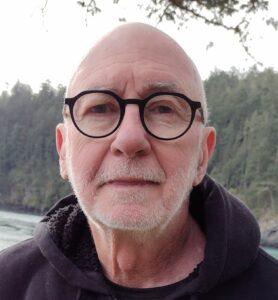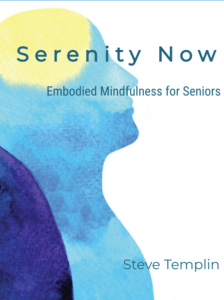Inner calm is a gift we can nurture in ourselves. It’s the felt experience of a safe, larger presence of which we are a part. It’s also a neurological state that can be acquired with practice.
Spiritual, religious, and scientific communities have referred to this inner state by a variety of names. It’s been called Presence, Peace, Being, Spirit, God, Consciousness, Energy, Tao, Whole Brain Synchrony, Ventral Vagal State, and more.
Individuals who are moved to experience this inner dimension, are described as dreamers, idealists, seekers, having an artistic temperament, tree huggers, and some less respectful names by the more vocal and dominant, less sensitive, externally focused majority.
These inner calm seekers tend to be a fraction of the population, just as are HSPs. My suspicion is that the two are often the same 20%minority.
If the seeking HSPs are a minority, then it’s the majority of less sensitive individuals that create the laws, rules, and institutions that do not necessarily serve the needs of HSPs. Not only do these cultural forces not serve the needs of the HSP, they can be outright damaging.
Not being seen, heard, or respected for who we really are often begins in infancy (I’ll say more about this in a moment) and then is perpetuated by a culture that’s more oriented towards its own dominance and survival than meeting the more essential inner needs of all human beings, sensitive or not.
It may just be that those who are seeking to satisfy an inner longing, that isn’t satisfied by our externally oriented, highly competitive materialistic culture, may actually be pointing towards something that the entire society needs for it to thrive and survive.
It’s possible that the HSPs common experience of overwhelm and fatigue points to a larger cultural imbalance that’s reflected in a significant increase in both physical and emotional illness in the general population.
The experience of inner calm is a reflection of a neurological state that also gives rise to enhanced intuitive guidance, open hearted compassion, and more awareness of our authentic human needs.
This heart connected state connects and attunes us not only to ourselves but to others as well.
This neurological state awakens a felt sense of connection not only to our inner self, but to others, and nature as well. This sense of connectedness encourages support, cooperation, and compassion that serves the whole.
Your Brain Likely has Undeveloped Real Estate
An experience of calm, peace, or well being is often viewed from a spiritual, religious, or psychological perspective. New science shows that we can view these inner states as a reflection of neurological balance, a balance that with practice can be altered at will.
The prefrontal cortex is that part of the brain that allows us to consciously think, consider, and choose wisely rather than reacting unconsciously, defensively, and often destructively. The more we access the prefrontal brain the more likely it is that we experience calm, peace, and increased equanimity more frequently and at will.
The prefrontal cortex, the last part of the human brain to develop through the evolutionary process, is also the last part of the brain to grow for each of us personally.
It begins to grow after we’re born and is nurtured into existence by an experience of love and safety, ideally provided by a very attuned primary caregiver. Its growth is inhibited by a lack of safety and love, or as the psychologists would say, a lack of healthy attachment.
So, if we have an ideal early nurturing experience with our mother, or father, we can more likely grow into a healthy adult with a well developed prefrontal cortex who is calmly and safely grounded in present time reality.
When we don’t have a consistent dose of that early nurturing experience our prefrontal brain is less developed, less active, and more difficult to access because our attention is hijacked by more primitive and reflexive brain structures, like the limbic brain.
The inner self-regulation practices that create more personal equanimity through the activation of the prefrontal cortex, also reduce unconscious aggressive and defensive reactions.
With this perspective we have the potential to change culture one brain at a time.
How to Grow Your Prefrontal Cortex and Experience More Calm
The key to growing into your more authentic self and experiencing more calm is found in your body, especially in your heart and its capacity for nonjudgmental awareness.
When you allow attention to drop down out of your thinking head and begin to curiously, rather than judgmentally, notice bodily sensations, especially those around your heart, you begin to shift neurological balance which gives rise to different emotional and physical functioning and experience.
I’ll share a HeartMath technique with you called Heart Lock-in and I’ll also include a brief video where I’ll invite you to shift into a more balanced neurological state.
Heart Lock-In
The Heart Lock-In Technique helps you accumulate energy and renew and recharge your emotional system with these steps:
Step 1. Focus your attention in the area of the heart. Imagine your breath is flowing in and out of your heart or chest area, breathing a little slower and deeper than usual.
Step 2. Activate and sustain a regenerative feeling such as appreciation, care or compassion.
Step 3. Radiate that renewing feeling to yourself and others.
This benefits them and especially helps recharge and balance your own system. When you catch your mind wandering, simply refocus your attention on the heart area and reconnect with feelings of care or appreciation. After you’re finished, sincerely sustain your feelings of care and appreciation as long as you can.
Once you have become familiar with these steps, use the quick steps:
Heart-Focused Breathing • Activate a regenerative feeling • Radiate
* Here’s a link to a comprehensive instructional PDF covering the Heart Lock-in Technique.
* You can watch the accompanying 60-second guided video here.


 Steve is a retired Doctor of Oriental Medicine, Acupuncture Physician, and HeartMath Trauma-Sensitive Certified Practitioner with over 35 years of clinical experience in the fields of Energy Medicine, Energy Psychology, and Biofeedback.
Steve is a retired Doctor of Oriental Medicine, Acupuncture Physician, and HeartMath Trauma-Sensitive Certified Practitioner with over 35 years of clinical experience in the fields of Energy Medicine, Energy Psychology, and Biofeedback. 